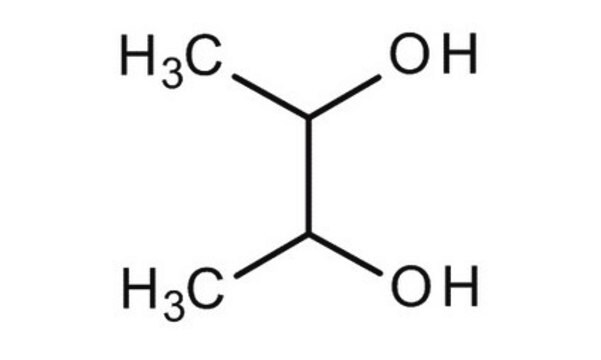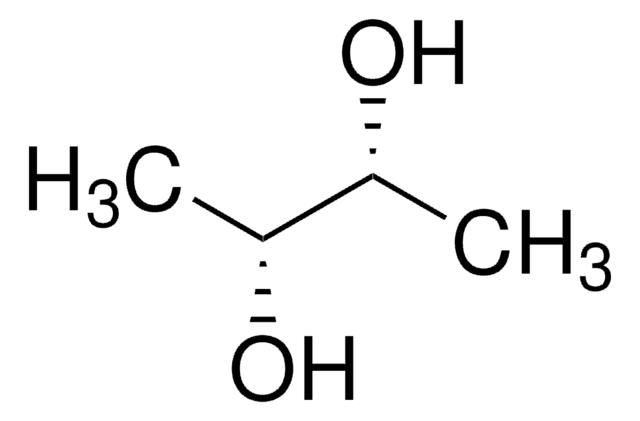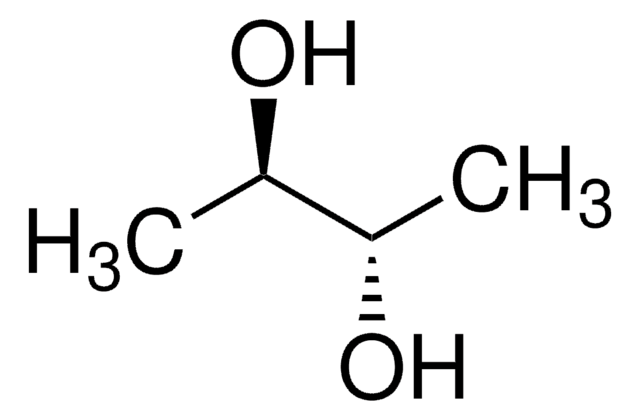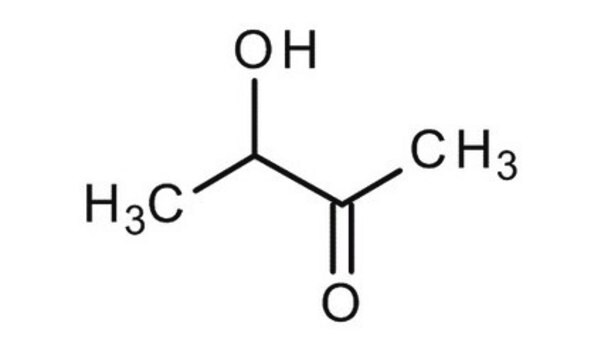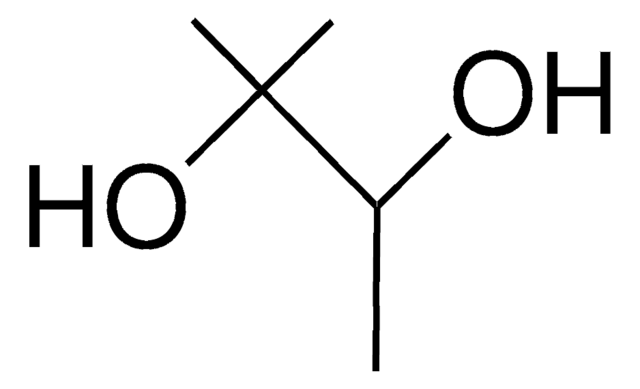B84904
2,3-Butanediol
98%
Sinonimo/i:
2,3-Butylene glycol
Autenticatiper visualizzare i prezzi riservati alla tua organizzazione & contrattuali
About This Item
Formula condensata:
CH3CH(OH)CH(OH)CH3
Numero CAS:
Peso molecolare:
90.12
Beilstein:
969165
Numero CE:
Numero MDL:
Codice UNSPSC:
12352100
ID PubChem:
NACRES:
NA.22
Prodotti consigliati
Livello qualitativo
Saggio
98%
Stato
liquid
Indice di rifrazione
n20/D 1.433 (lit.)
P. ebollizione
183-184 °C (lit.)
Punto di fusione
25 °C (lit.)
Densità
1.002 g/mL at 20 °C (lit.)
Stringa SMILE
CC(O)C(C)O
InChI
1S/C4H10O2/c1-3(5)4(2)6/h3-6H,1-2H3
OWBTYPJTUOEWEK-UHFFFAOYSA-N
Cerchi prodotti simili? Visita Guida al confronto tra prodotti
Categorie correlate
Descrizione generale
2,3-Butanediol (2,3-BDO) is used as precursor in the synthesis of cyclic carbonates and methyl ethyl ketone.
Applicazioni
- CRISPR/Cas9 in Pichia pastoris: 2,3-Butanediol (BDO) is used in the construction of P. pastoris cell factories as a representative example to demonstrate the procedures for integrating multiple heterologous genes using the CRISPR-based multiplex genome integration toolkit (Gao et al., 2024).
- Antifungal activity in sorghum: 2,3-butanediol, a metabolite of A. oryzae YRA3, can induce the production of root exudates which modulate the growth of the rhizospheric fungi and bacteria (Rashad et al., 2023).
Codice della classe di stoccaggio
10 - Combustible liquids
Classe di pericolosità dell'acqua (WGK)
WGK 1
Punto d’infiammabilità (°F)
185.0 °F - closed cup
Punto d’infiammabilità (°C)
85 °C - closed cup
Dispositivi di protezione individuale
Eyeshields, Gloves, type N95 (US)
Scegli una delle versioni più recenti:
Possiedi già questo prodotto?
I documenti relativi ai prodotti acquistati recentemente sono disponibili nell’Archivio dei documenti.
I clienti hanno visto anche
Natsuo Ueda et al.
Neuropharmacology, 48(8), 1079-1085 (2005-05-25)
It is widely accepted that fatty acid amide hydrolase (FAAH) plays a central role in the hydrolysis of anandamide. However, we found a second N-acylethanolamine hydrolase in animal tissues which hydrolyzed anandamide at acidic pH. This "acid amidase" was first
Xiao-Jun Ji et al.
Biotechnology advances, 29(3), 351-364 (2011-01-29)
2,3-butanediol is a promising bulk chemical due to its extensive industry applications. The state-of-the-art nature of microbial 2,3-butanediol production is reviewed in this paper. Various strategies for efficient and economical microbial 2,3-butanediol production, including strain improvement, substrate alternation, and process
E Celińska et al.
Biotechnology advances, 27(6), 715-725 (2009-05-16)
Biotechnological production of 2,3-butanediol (hereafter referred to as 2,3-BD) from wastes and excessive biomass is a promising and attractive alternative for traditional chemical synthesis. In the face of scarcity of fossil fuel supplies the bio-based process is receiving a significant
Frank Plaisant et al.
Free radical biology & medicine, 34(7), 862-872 (2003-03-26)
The pathophysiology of brain lesions associated with cerebral palsy is multifactorial and likely involves excess release of glutamate and excess production of free radicals, among other factors. Theoretically, antioxidants could limit the severity of these brain lesions. Peroxiredoxins are a
Patricia Hermand et al.
The Journal of biological chemistry, 278(7), 4892-4898 (2002-12-13)
ICAM-4 (LW blood group glycoprotein) is an erythroid-specific membrane component that belongs to the family of intercellular adhesion molecules and interacts in vitro with different members of the integrin family, suggesting a potential role in adhesion or cell interaction events
Protocolli
99%; Glycerol, ≥99.5%; Tetraethylene glycol, 99%
Il team dei nostri ricercatori vanta grande esperienza in tutte le aree della ricerca quali Life Science, scienza dei materiali, sintesi chimica, cromatografia, discipline analitiche, ecc..
Contatta l'Assistenza Tecnica.

